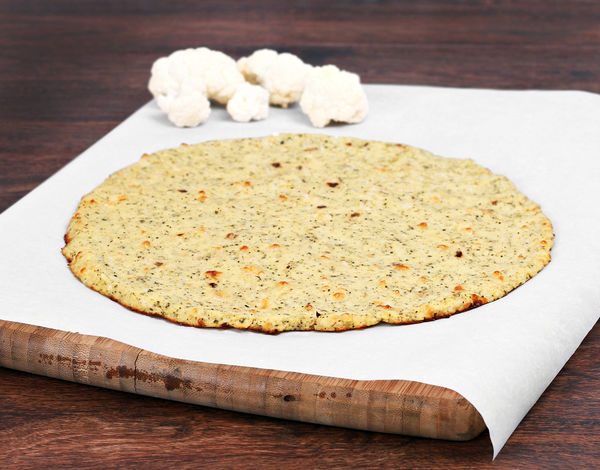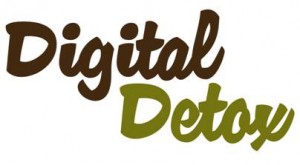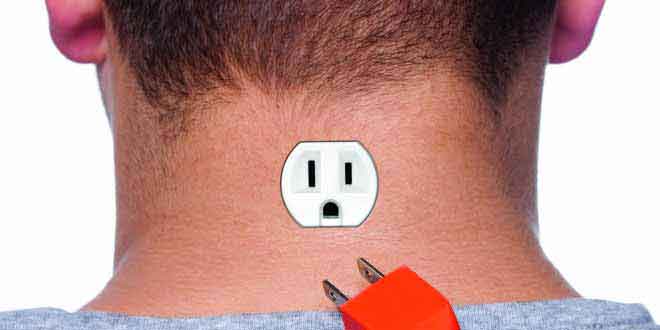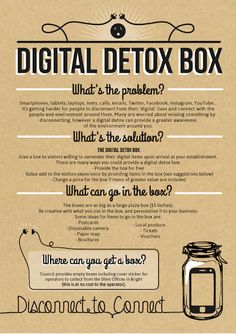Certified Organic Label Guide
Source: Organic.org
Making sense of organic labeling can be difficult, and many consumers do not understand the significance of the USDA Organic label. Since October 21, 2002, the following guidelines were established by the United States Department of Agriculture’s (USDA) National Organic Program (NOP) to assure consumers know the exact organic content of the food they buy.
Single-Ingredient Foods
On foods like fruits and vegetables, look for a small sticker version of the USDA Organic label or check the signage in your produce section for this seal.
The word “organic” and the seal may also appear on packages of meat, cartons of milk or eggs, cheese, and other single-ingredient foods.
Multi-Ingredient Foods
Foods such as beverages, snacks, and other processed foods use the following classification system to indicate their use of organic ingredients.
100% Organic—Foods bearing this label are made with 100% organic ingredients* and may display the USDA Organic seal.
Organic—These products contain at least 95–99% organic ingredients (by weight). The remaining ingredients are not available organically but have been approved by the NOP. These products may display the USDA Organic seal.
Made With Organic Ingredients—Food packaging that reads “Made With Organic Ingredients” must contain 70–94% organic ingredients. These products will not bear the USDA Organic seal; instead, they may list up to three ingredients on the front of the packaging.
Other—Products with less than 70% organic ingredients may only list organic ingredients on the information panel of the packaging. These products will not bear the USDA Organic seal.
Keep in mind that even if a producer is certified organic, the use of the USDA Organic label is voluntary. At the same time, not everyone goes through the rigorous process of becoming certified, especially smaller farming operations. When shopping at a farmers’ market, for example, don’t hesitate to ask the vendors how your food was grown.
*Salt and water are not included.
time
Why is Vitamin D So Important? Best Sources of Vitamin D.
Vitamin D
Vitamin D is essential to the body. A few of Best sources of Vitamin D come from shrimp, sardines, cod and eggs. The FDA has set the reference value for nutrition label for vitamin D at 400 IU’s. Therapeutic ranges fall between 400 to 1000 IU’s.
Vitamin D is a fat soluble vitamin, and actually functions more like a hormone then vitamin. It works with the parathyroid hormone to maintain proper levels of calcium in the blood.
We need vitamin D to help our bones and teeth. It also helps regulate the growth and activity of cells. Vitamin D also helps prevent excessive inflammatory immune related activity, it builds your immune system and helps protect against disease.
Vitamin D deficiency results in decreased absorption of calcium and phosphorus. Prolonged deficiency can lead to an impact on your bone mineralization, Thus experiencing bone thinning (osteopenia), bone pain and or soft bones (osteomalacia).
It is estimated that nearly 75% of Americans are deficient in vitamin D1. For many people, basking in the sun may not be an answer because of skin conditions and sensitivities. Eating oily fish on a regular basis also may not be an option, much of our seafood is over-fished or contaminated from pollution so it can be difficult to find pure sources. Surprisingly, there are several foods packed with vitamin D that are easy to incorporate into your everyday routine.
If you think you’re going to get enough vitamin D from the sun you need to have at least 40% of your skin exposed for at least 15 minutes a day. Otherwise you will need to get your vitamin D from food and or supplementation.
If you prefer to get your protein vitamins or minerals from a plant-based diet, try mushrooms. 3 ounces portobello mushrooms is 20 cal, 3 g of protein, 1 g dietary fiber, zero cholesterol, 15 mg of sodium, 300 mg of potassium and 4% of your vitamin D for the day.
Other Great Sources of Vitamin D:
Swiss Chard
Most leafy greens are high in vitamin D, but chard trumps them all. Add to your omelet or steam with garlic and onions. Try swiss chart instead of raw Kale in your smoothie and your stomach will thank you for the easier digestion.
Squash and Pumpkin Seeds
Go for Raw and sprouted!My favorite variety of pumpkin seeds are pepitas, the shelled pumpkin seed that has been roasted and sometimes tossed with spices and sea salt.
Beef Liver
Most people remember (not-so-fondly) being forced to eat liver and onions, but beef liver can actually be delicious. Try it in chili or even mix half beef liver and half bison or beef in your favorite meatball recipe. Organic is SO Important!
Mushrooms
Mushrooms, especially ones grown in sunlight, are very high in vitamin D. Portobello mushrooms are actually considered one of the best vegan sources of vitamin D.3
Caviar
It may not be for everyone and it can be quite expensive, but caviar is also high in vitamin D. If you can’t afford a fresh tin of expensive caviar (which typically isn’t sustainable anyways), try fresh fish roe next time you go out for sushi. Many brands carry organic, sustainably roe at affordable prices.
Almond Milk
While almonds are very high in vitamin D, many people don’t remember to eat a couple handfuls every day. Try buying almond milk instead of dairy.
Chicken Liver
Liver may turn some people off, but they can be so tasty if cooked right. Try it with Black rice, which has sautéed onions, garlic, peppers, spices and chicken livers.
Dark Chocolate
Good news! Dark chocolate that has over 60% cacao content is packed with vitamin D, so the next time you have a sweet craving, indulge in a few small pieces of high-quality dark chocolate, Organic of course! Look for Cacao not Cocoa.
Cauliflower Pizza Crust
Cauliflower Crust Pizza
ALL ORGANIC INGREDIENTS
Crust
- 1 small to medium sized head of cauliflower – should yield 2 to 3 cups once processed
- ¼ cup shredded Parmesan cheese, or vegan cheese
- ¼ cup mozzarella cheese or vegan cheese
- 1 egg or 1 flax egg
- ¼ teaspoon salt
- ½ teaspoon garlic powder
- ½ teaspoon basil or rosemary
- ½ teaspoon oregano
Optional Toppings:
- 1 cup Organic marinara sauce
- 1-2 cups vegan Organic mozzarella cheese
- Preheat oven to 500 degrees F.
- Remove the stems from the cauliflower and cut into chunks, place the cauliflower into a food processor, pulse it until it resembles the texture of rice. If you don’t have a food processor, you can use a cheese grater or chop it very finely.
- Place the cauliflower in a kitchen towel and squeeze all the liquid out of it. Be sure to squeeze as much liquid as possible!!! Very important!
- Combine the cooked cauliflower, egg or flax egg, garlic, cheese, and seasonings. Stir until a dough texture forms. Spread the cauliflower mixture out onto lightly greased parchment paper or a pizza pan in the shape of a pizza crust.
- Bake the crust for approximately 10-15 minutes (depending on your oven), or until the crust is golden and crispy. After the crust is golden remove it from the oven and add your toppings.
- Place the pizza back in the oven but this time turn on the broiler, bake for about 2-5 minutes until the cheese melts. be sure to keep an eye on it because the broiler can burn the cheese quickly.
- Make sure you add love! Slice and serve smiles!
10 Reasons to Eat Clean
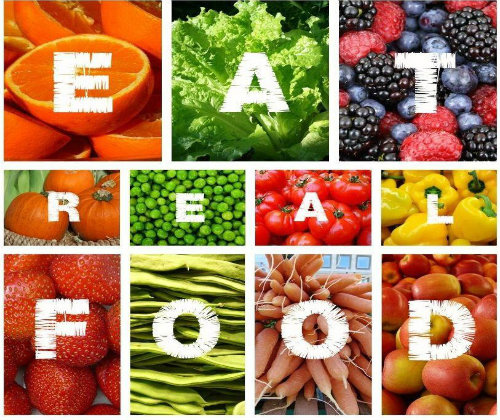
1. You’ll become more mindful.
Which one takes longer and really makes you slow down? Eating clean also means eating with purpose and savoring food. That means a better relationship with everything from radishes and radicchio to red velvet cupcakes (which you’ll no longer crave).
2. You’ll save money.
Kiss sick days and medical bills goodbye when you get nutrients from eating clean, real food. Plus, shopping locally and in season makes sense– and cents. Planning clean meals for the week is cost-effective if you make a list and stick to it, as there’s no chance of overspending at the store.
3. You’ll live longer.
Study after study has shown that consuming these foods can lengthen your life-span. And in a study published in the American Journal of Epidemiology, European researchers have found that increasing your produce intake to more than 569 grams per day reduces your risk of mortality by 10 %.
4. You’ll have better relationships.
Preparing clean meals takes time, just the kind of time that allows for easy, relaxed conversations with your kids, spouse and other family members and friends. If they’re too busy with screen time to share stove-top time, point them to the Johns Hopkins Bloomberg School of Public Health 2014 study, published in Public Health Nutrition, showing good health comes from home cooking.
5. You’ll be smarter.
Eating a healthy diet rich in fruits, vegetables, fish and nuts keep our minds sharper and our memories stronger by a whopping 24 %, proved a study published in spring 2015 in Neurology. Our brains also function better with nutrients such as omega-3 fatty acids, as shown in Nature Reviews Neuroscience, while they slow and sputter down when we fill them with sugar (including alcohol), fast food and the wrong kinds of fats. If that’s all too much too think about, remember one point from the Nature Reviews Neuroscience report: A balanced diet means better brain health.
See also 9 Amazing Brain Boosters to Add to Your Diet.
6. You’ll have more energy.
Adam and Eve were onto something when they bit into that apple: Fruit is just one of many clean foods that provide an instant dose of energy. High-fiber fruits like apples take longer to digest and can instantly stave off that afternoon slump while providing critical vitamins for the evening ahead. Other pick-me-ups include quinoa, almonds, eggs, kale, citrus fruit and a good-old-fashioned glass of water.
7. You’ll be better in bed.
Mamma mia! Women with metabolic function in Italy and other regions of the Mediterranean enjoy a healthier sex life than those in the US, thanks to the components of their diet– yep, vegetables, fruits, nuts, whole grains and olive oil. That’s what researchers found in a comprehensive study published in the International Journal of Impotence Research.
8. You’ll help the planet survive.
There’s an oft-quoted statistic that food travels approximately 1,500 miles from farmer to consumer in the United States. By eating seasonal and local foods, as recommended by Clean Eating, you can help reduce your carbon footprint. As the American Journal of Clinical Nutrition reported in 2003, “The major threat to future survival and to US natural resources is rapid population growth”and “the lacto-ovo vegetarian diet is more sustainable than the average American meat-based diet.
9. You’ll be stronger.
The lean protein that comprises part of the clean-eating philosophy builds lean muscle mass and boosts metabolism, found a study presented at The Obesity Society’s annual meeting in 2014. Some mighty choices for your muscles (in addition to animal-based products like chicken, fish and lean beef) include quinoa, chickpeas, nuts, spinach and seeds.
10. You’ll be happier.
Food and mood go hand in hand. And the better the food, the better your mood. If you need to brighten your day, go for berries, bananas, coffee, lean proteins, chocolate, omega-3 and turmeric fatty acids, all proven to boost your mental state.
Digital Detox- A detox without Food!
Turn it OFF
The digital detox is nothing more than taking a break from your devices. While on vacation, we are constantly connected over social media, email, and by using our devices to find the best restaurant on Yelp or the best route on maps. “Some of the changes I’ve noticed in clients after they’ve taken a digital detox are that they are more balanced and calmer in their lives due to periodically stopping the continual digital exposure throughout their day.”Try to have at least one hour before bedtime where there is no digital stimulation so you can unwind. Don’t let digital devices stay on at night next to you unless it’s mandatory.
And although others take a more hardcore approach with week-long ‘summer camps’ or designated holidays, pledging to take just one day offline while you travel means you can reap the benefits of a detox, without sacrificing the joy of staying connected to your family and friends or taking the perfect Instagram or Snapchat shot.
Some suggest that the discipline in these smaller detoxes can be hugely beneficial to your mental state, and you can implement them on a smaller scale in your everyday routine.
This video points out the daily grind, and why we could all use a break.
This concept can be difficult at first, the benefits are real. Many detoxers find a real world connectedness that enriches and enhances our lives in a way no Wi-Fi connection can.
These short-term benefits are just part of the story. Mentally, even a short break from electronics can have long-term benefits that can make you happier and more successful in every aspect of your life.
Today, in a world where the average user logs almost 2 hours per day on social media alone, this idea is somewhat terrifying. Dr. Yvonne Thomas, a psychologist and therapist based in Los Angeles, puts it simply: “You can be so preoccupied with your digital devices that it’s all too easy to inadvertently sacrifice time, relationships, sleep, focus, productivity and balance in your life. Many people are not even aware of the toll their extensive usage of digital devices costs them until they have suffered a loss or upset because of this.”.
Could this cure-all of the tech world provide more benefits to the humans using the tech than the devices themselves? Digital detox devotees think so, and they’ve started a movement that seems to grow louder and larger with every tech announcement or app update.
Not convinced? Try it for one week.
How to detox without losing your job or social life.
There’s no one-size-fits-all approach to detoxing. Randi Zuckerberg, founder and CEO of Zuckerberg Media, believes in a ‘digital sabbath’, while Google chairman Eric Schmidt believes in scheduled ‘on’ and ‘off’ times, and commits to gadget-free meals.
When traveling and taking a vacation, every notification you receive– emails, instant messages, text messages, social media notifications– takes a moment to acknowledge, another to process and another (or a few depending on how soon that deadline really is) to forget. Suddenly the notification, even if you neglected to react or respond to it, is a significant distraction from what should be a chance to explore another culture and enjoy some time away from the screen. Multiply this by the 50+ notifications many of us will receive in a day, and you can start to get a sense of what you’re losing to your device.
Dr. Thomas has seen first-hand how deep the benefits can be. “Some of the changes I’ve noticed in clients after they’ve taken a digital detox are that they are more balanced and calmer in their lives due to periodically stopping the continual digital exposure throughout their day.
“Try to have at least one hour before bedtime where there is no digital stimulation so you can unwind. During this digital-free time period, try to connect with yourself through meditation, reflection or awareness. Don’t let digital devices stay on at night next to you unless it’s mandatory.

